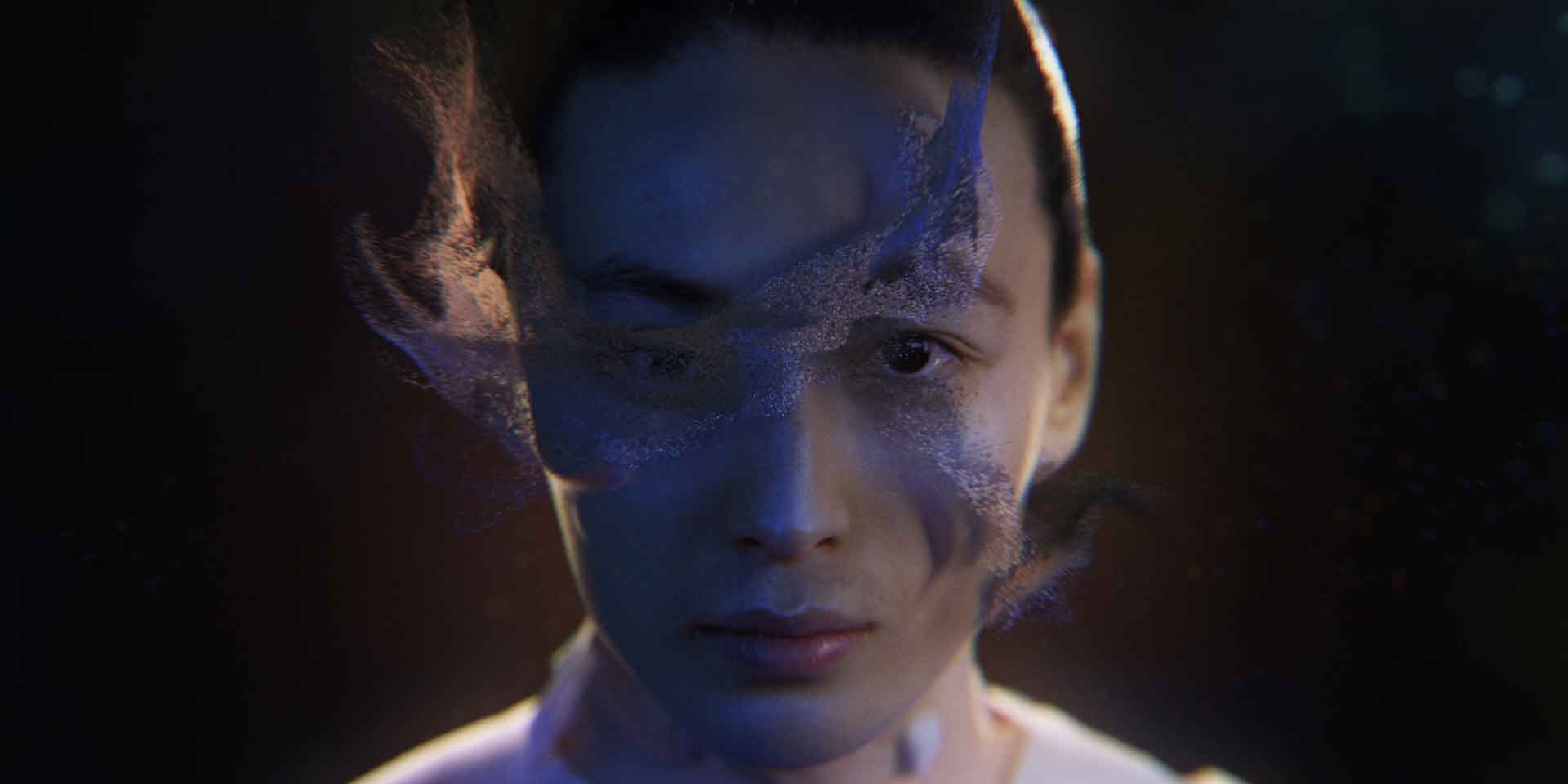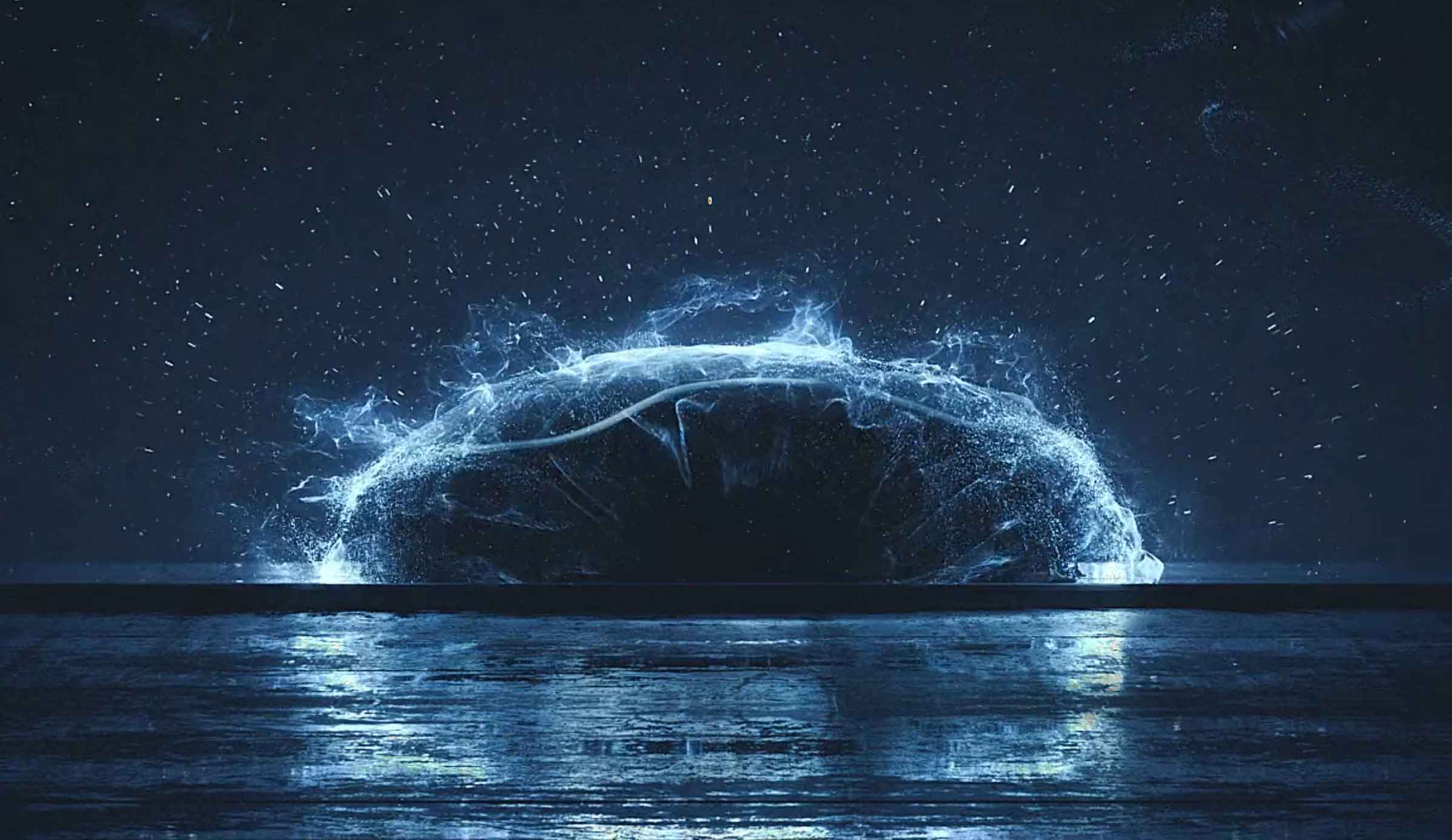We spoke with Alexander, Egor & Elen of Radugadesign Studio. With studios based in Russia, the US, and China, we wanted to find out how X-Particles functions within the pipeline of a studio on the international stage.
Radugadesign are well versed in an array of computer graphic software, therefore, X-Particles is often used among other tools. With X-Particles being used for a variety of simulations, what aspects of a project would lead you to think ‘this is a job for X-Particles’?
There are a few advantages to X-Particles. First, the initial research and development can be completed quickly and easily with just a single emitter. X-Particles is the best plugin for Cinema 4D, our pipeline production is built on Cinema 4D. X-Particles works with a small number of particles, you get the desired shape, and when you add more particles, the shape hardly changes. Aside from this, X-Particles is really user-friendly and simple to learn.
In the reel, we are shown a host of different projects ranging from big named rebranding events to permanent exhibitions. X-Particles has been used by Radugadesign in projection mapping, interactive and immersive art installations as well as car launches and titles! Can we start by talking about the digital art exposition at Gagarin International Airport in Saratov, Russia (00:57 in the reel)?
Sure, so we created the interactive content of the permanent exhibition, dedicated to the interconnection between humans and outer space. Each section of the airport is occupied with a different thematic block of the exposition. We developed content for a 35m LED screen with a resolution of over 11K.
The main idea behind this project was to convey human determination and desire to travel and search for something new. X-Particles was a great tool to implement complex particle animations, which perfectly fit into the general mood of the videos and add a little bit of futurism to the piece.

Can you tell us about the Kia logo reveal (00:14 in the reel)? How did you achieve this effect and where was this showcased?
We worked on the whole online Hyundai Brand Conference event. X-Particles was used throughout the Kia logo reveal. We wanted to create a dense volumetric shape from particles and immediately knew that X-Particles would meet the case.

Another clip from the reel that caught our eye was the rocket launch from the product presentation (01:05 in the reel). Can you tell us more about this presentation and how it was created?
The Radugadesign studio re-branded and created a presentation for the software package, Logos. We showed the possibilities and prospects of 3D modeling based on Logos Aero-Hydro with the help of a light show. The idea was to visualize the calculations performed in a specialized 3D tool, Logos Aero-Hydro.
The features of X-Particles made it possible to convey the capabilities of this software accurately and visually correctly. The content itself was displayed on a projection grid, which allowed us to achieve that great holographic effect.

Your short film project, I am, was presented as part of the Motion Response selection for Pause Fest 2020 (00:24 in the reel). The faces change from one to another, as particle simulations distort the faces during the transition. Can you tell us how this effect was realized, and the meanings attached to it?
Models were shot from a static camera. We got the face geometry and texture of each actor through the FaceTracker using Nuke. We used the built-in Cinema 4D noise to morph the faces and change the facial texture.
We also used Cinema 4D noise as a map for the source of the particles. To match the color of the particles with the skin color and lighting, we finalized the scene without particles, did the final compositing without particles, and then projected the resulting sequence from the camera onto the geometry of the faces and baked it into UV. We used the final texture as a particle color map.

At the start of the reel, we’re shown a silhouette of a car while an array of exciting particle simulations happen all around. Trails, rain, and wind tunnel effects add to this electric feeling – the viewer is dying to see what car is hiding underneath. Tell us! What car launch was this? And how were these simulations created?
This piece was created for the release of the Volvo S90 in Russia. Volvo’s key philosophy 'Designed around you' is what inspired us to create this visual concept entitled The Birth of Excellence.
To put it briefly, we had two projection grids, one on the left and one on the right, the car was always stationary under the screen. All the simulations were created to keep the shape of the car, X-Particles was the main tool for this project, the change group modifiers helped us out a lot with this one.

Thanks for taking the time to talk to us today. It’s clear that Radugadesign have been using X-Particles for a number of years now. Before you go, can you tell us about your favorite features inside X-Particles?
To be honest, there are several reasons why we like X-Particles. The flexibility of X-Particles and the speed at which we can work are the main aspects that set it apart. However, it’s also INSYDIUM as a company; the online announcements and regular communication is greatly appreciated, especially the top-level tutorials and training. It really helps us artists keep up to speed! Lately, lessons from INSYDIUM really help, they have a solid tutorial base.

Art Director Alexander Abramov
Art Director Egor Andrianov
Lead Generalist Elen Elkiev



